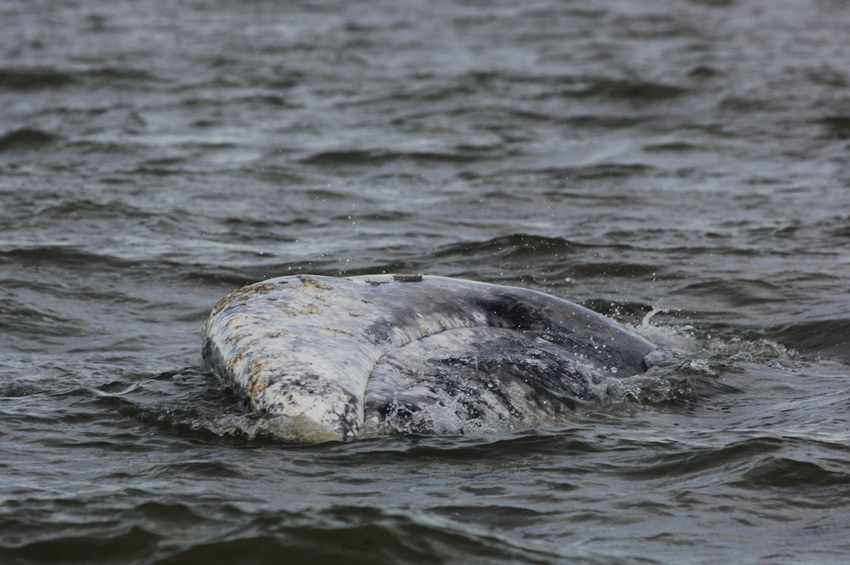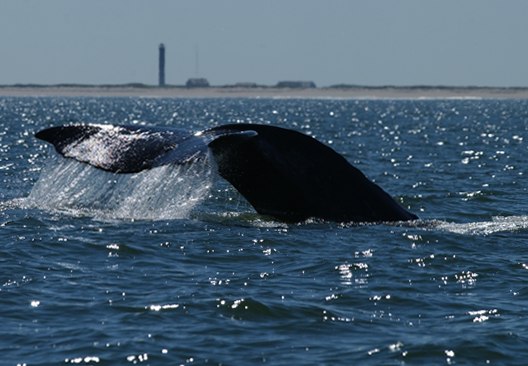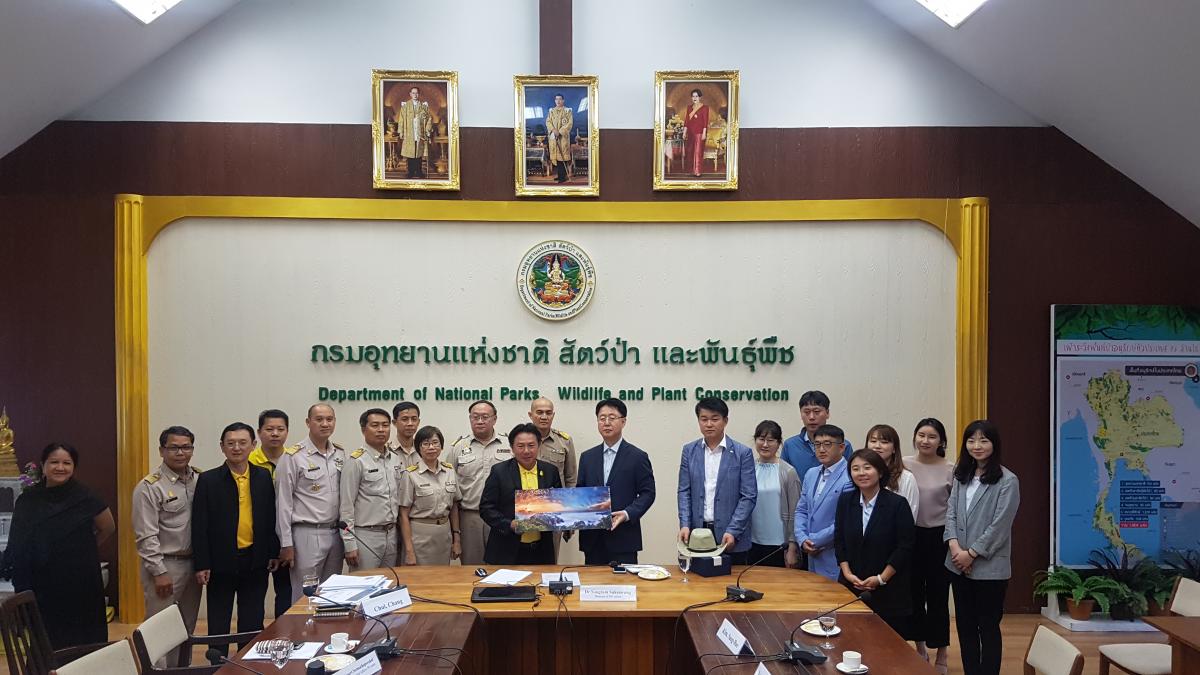International scientists track endangered whale to discover breeding grounds
A team of scientists from Russia and the United States has successfully tagged and is tracking by satellite an individual from one of the world’s most endangered whale populations – a western gray whale - off the coast of Russia’s Sakhalin Island. IUCN has been involved in the tagging and tracking process, providing scientific advice and logistical support.
There are only about 130 western gray whales left. The species is listed as Critically Endangered on the IUCN Red List of Threatened Species™, with perhaps only about 33 mature and reproductively active females. Their feeding grounds in the Russian Far East are known but details of their migration routes and breeding grounds are not.
This is the first time an individual from the western gray whale population has been tagged and tracked using telemetry. “Tremendous care was taken to select a healthy adult male,” says Greg Donovan, Head of Science for the International Whaling Commission (IWC), based in Cambridge, who co-ordinated the project. “Although the risks associated with such tagging are minimal, we wanted to take absolutely no chances with females or young animals. The information we expect to get from this study is vital to international conservation efforts to preserve this population, as is the collaboration between governments, international organisations, international scientists, industry and other stakeholders.”
The tagged whale, known as ‘Flex’, has been seen regularly in the Sakhalin area in summer since it was photographed as a calf in 1997. The team has been following its movements via satellite with data beamed from the transmitting tag.
The scientific expedition was led by Vladimir Vertyankin, of the A.N. Severtsov Institute for Ecology and Evolution of the Russian Academy of Sciences (IPEE RAS), which has over 35 years of experience with marine mammal research in the region. The tagging component was led by Bruce Mate, director of the Marine Mammal Institute at Oregon State University (OSU), a pioneer in the use of satellites to track whales since the late 1970s. The remaining team members comprised 5 scientists from Russia and the USA, including Grigory Tsidulko (IPEE RAS) and Amanda Bradford from the University of Washington, who have both studied western gray whales for many years. The telemetry programme was developed by IPEE RAS, OSU and an international team of experts from IWC and IUCN, and was carried out under a permit granted to IPEE RAS as part of their western gray whale research programme.
“Not a lot is known about western gray whales, so finding out where they migrate to breed and calve will be a tremendous step forward,” says Bruce Mate, director of the Marine Mammal Institute at Oregon State University. “Finding the migration routes and winter grounds of this critically endangered population will allow range states to develop or improve effective measures to protect the whales,” says Vyatcheslav Rozhnov, Deputy Director of the A.N. Severtsov Institute for Ecology and Evolution of the Russian Academy of Sciences (IPEE RAS), which advances satellite telemetry in Russia.
The field team embarked on its expedition in late August to the remote Sakhalin Island region to locate and tag whales. Logistical challenges and bad weather conspired to thwart their efforts, even though some 25 males were sighted and approached. Finally, on the last day of the expedition, the team managed to tag ‘Flex’. His movements have been tracked via satellite on a daily basis since then.
“The conditions were particularly difficult because of the weather,” says Valentin Ilyashenko of IPEE RAS and the Russian representative to the IWC. “The team had to cope with the remnants of two typhoons and several smaller storms. But the perseverance of the entire group and the international collaboration, especially between U.S. and Russian scientists in the field, has really paid off. We should learn new things about these endangered whales that will help to join national and international efforts to better protect these whales.”
In the first eight weeks since the whale was tagged, the transmitter has sent hundreds of messages from 237 locations and documented where the whale has travelled. Its path has covered 828 kilometers – all within a few kilometers of the shore – and thus far has stayed close to the original tagging site as it moves north and south along the eastern shore of the island to feed.
Everyone involved in this effort hopes that the transmitter will continue tracking for as long as a year, but for now they are focussed on the short term. “What we really hope to discover is where these whales migrate to breed and calve,” says Finn Larsen, Marine Programme Officer, IUCN Global Marine and Polar Programme. “It would be nice to have a full year of data, but it is these first three to four months that are probably the most critical.”
Notes to editors:
The western North Pacific population of gray whales was greatly reduced by whaling in previous centuries. It was feared to be extinct in the mid-1970s but was ‘rediscovered’ off Sakhalin Island and has been monitored there since the mid-1990s. Thankfully, there is evidence of a fragile recovery. Individual animals can be recognised and sexed by photographs and genetic information obtained from biopsies. Sakhalin Island is also the site of major offshore oil and gas activities and national and international efforts are under way to minimise the impacts of industrial development on the whale population. In addition, the whales are threatened in much of their presumed range by accidental entrapment or entanglement in fishing gear and by heavy ship traffic. A Rangewide Conservation Plan has been developed by IUCN and endorsed by the IWC; obtaining telemetry data is also a high-priority action within that Plan.
This project represents a major international collaboration between the International Whaling Commission, IUCN, the A.N. Severtsov Institute of Ecology and Evolution Russian Academy of Sciences and Oregon State University’s Marine Mammal Institute. Funding for the work was provided by Exxon Neftegas Ltd. (ENL) and Sakhalin Energy Investment Company (Sakhalin Energy). ENL and Sakhalin Energy have sponsored a western gray whale monitoring programme conducted offshore Sakhalin since 1997.
For more information or to set up interviews, please contact:
Nicki Chadwick, Media Relations Officer, IUCN Office, t +41 22 999 0229, m +41 79 528 3486, nicki.chadwick@iucn.org





